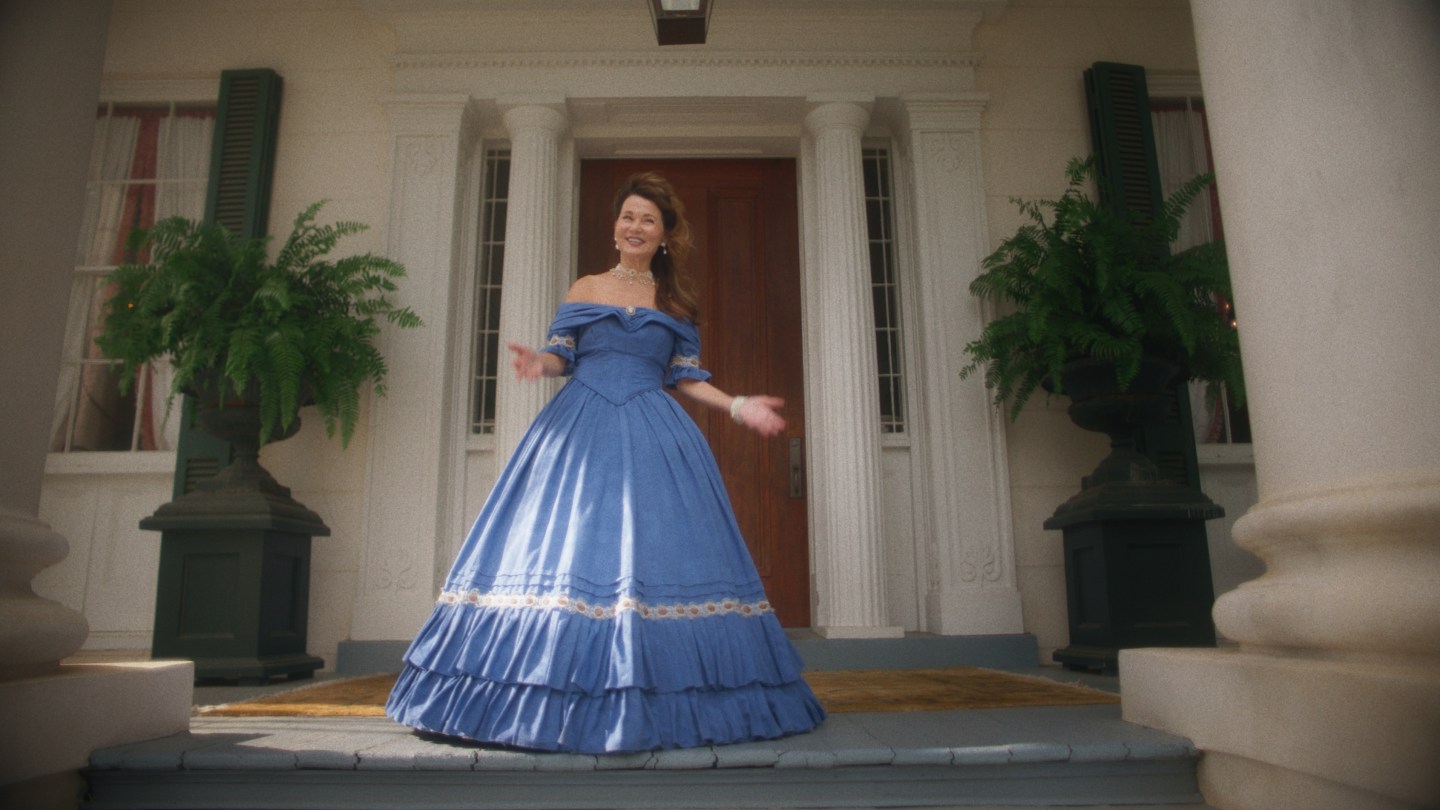The first thing you notice about Suzannah Herbert’s doc Natchez is how the film looks.
A dreamy aesthetic prevails, conjuring a kind of nostalgic longing. Working with the cinematographer Noah Collier, Herbert films the people and landscapes in Natchez, a small Mississippi town known for its antebellum house tours, in a gauzy, golden light. The effect is alluring. It paints a serene image of this city, set against the Mississippi River, and prepares us for an optimistic first scene.
Natchez
The Bottom Line
Raises urgent questions.
Venue: Tribeca Film Festival (Documentary Competition)
Director: Suzannah Herbert
1 hour 26 minutes
Natchez opens with the city’s mayor attending a meeting with the garden club. There he declares his excitement for a new Natchez, one that appreciates all of the town’s history — good and bad. He proceeds to bring the hands of a Black woman standing on his left and a white woman to his right together and says, with a smile, “this is what Natchez is right here.”
The mayor’s statement sounds like a declaration, an announcement of the next chapter for a place that, like so many American cities, is marked by a deep history of slavery. But over the course of Natchez, which premiered at Tribeca and took home the documentary feature prize as well as special jury awards for cinematography and editing, you realize that the mayor’s sentiments are, for some people, more a question than a proclamation.
In Natchez, Herbert observes how an American city that profits off its antebellum history grapples with its legacy of slavery. The doc is another entry in a slim catalog of works about this small town. In 2020, travel writer Richard Grant wrote about Natchez in his book The Deepest South of All. Some of the characters he talked to make an appearance in Herbert’s film. Natchez also complements Margaret Brown’s Descendant, which, by exploring the story of the Clotilda slave ship, also considers what the wealthy and powerful white families in Mobile, Alabama, have inherited materially as well as spiritually. There’s a brief but instructive moment in Brown’s film when the director interviews a descendant of a prominent slave-owning family. The conversation is stilted and awkward, revealing a discomfort around even acknowledging this painful history.
There are several similarly uncomfortable moments in Natchez, which follows the mayor’s garden club appearance with a brief history of the city as told by some of the doc’s participants. Natchez used to be one of the richest locales in the U.S., with many of its residents amassing wealth from the cotton business. It was also home to, according to one participant, the second largest domestic slave market in the country.
But in the early 1930s, an infestation of boll weevils destroyed the cotton and tanked the local economy. In an attempt to stay afloat, the garden club decided to host landscape tours, but these later turned into full-blown house tours after a nasty rain storm foiled the plans to show off manicured foliage. Today, Natchez is a popular spot for tourists interested in these home walkthroughs.
Herbert talks to a number of people in Natchez, from homeowners who’ve inherited these stately mansions and continue the tradition to townspeople trying to create monuments to the city’s enslaved population. One of the biggest events in the town is the Pilgrimage, an antebellum extravaganza that involves elaborate costumes and tours. At the beginning of Natchez, the townspeople are preparing for this spectacle and considering how they might integrate conversations about slavery. Herbert includes a range of moments, from earnest attempts to talk about the enslaved people that maintained all these palatial homes to clumsier ones in which they are referred to as workers, insinuating that their labor was paid for instead of forced.
Natchez ultimately coalesces around three principal figures, all of whom represent different aspects of life in the city. There’s Tracy, a white woman who reveres the southern belle tradition and helps out with the home tours. There’s another Tracy, a black Mississippian who gives tours offering a more robust picture of Natchez. And finally, there’s David Garner, a neo-Confederate who maintains a mansion with his husband that is one of the more popular houses on the tour. He is a particularly fascinating figure and in many ways reflects the contradictions of the town. Here’s an openly gay man, attuned to the civil rights struggles of the LGBT community, who freely uses racial slurs when referring to Black people. His tours are tacit reminders that, for some people, the past is still the present.
Herbert’s doc unfolds at a considered pace, mirroring the languorous speed at which Southern life moves. The filmmaker’s unhurried approach helps build tension for Natchez’s deft crescendo. As the three stories become more intertwined, the genteel politeness on display at the start of the film falls away, revealing an unsettling core. Contradictions abound as we learn that Natchez was a place where formerly enslaved African Americans thrived during Reconstruction. And yet, it’s mostly white residents fighting against having the slave market memorialized in the 21st century. How can a city move forward without acknowledging the past? That’s not just a question for Natchez, but one for America as a whole.
